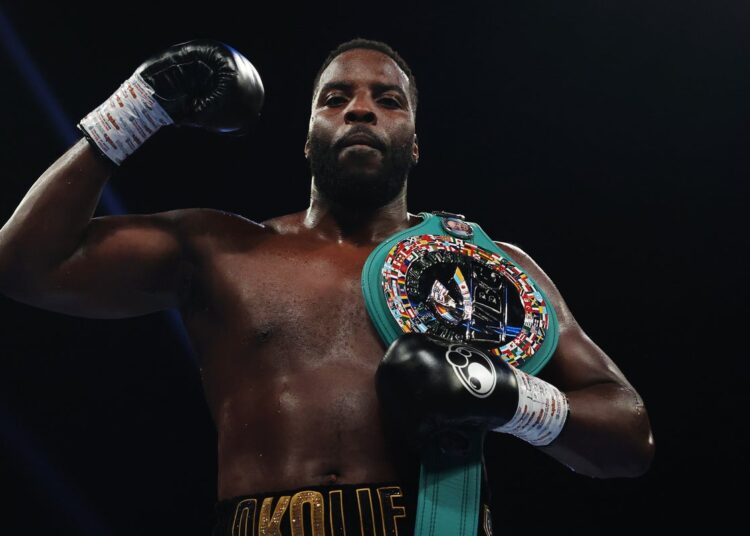Lawrence Okolie is a big lad, and he has always been a big lad. On Saturday night, at Wembley Arena, he made his heavyweight debut in a boxing ring and knocked out Germany’s Hussein Muhamed in just 134 seconds of the first round. Okolie weighed a career-high and astounding 260lb – 18st 8lb.
Okolie is the latest former world cruiserweight champion to move up in weight, forget the diet, neglect the lock on the fridge and fight at a comfortable weight. He joins an elite gang, by the way.
“I was never happy at cruiserweight,” Okolie said. “I was always making weight and that meant I was worried about my legs in a long, hard fight.”
On Saturday, at the ancient venue, Okolie was a full 60lb above the cruiserweight limit, and he looked great. It is a severe weight gain, and it might take on a new meaning in the boxing business: “He’s done an Okolie,” has just entered the boxing lexicon.
The weight gain between fights was not so severe; earlier this year, Okolie left the 200lb (14st 4lbs) limit of the cruiserweights to win the new bridgerweight title where the limit is 224lb (16st). In May of this year, Okolie travelled to Poland, weighed 223lb (15st 13lbs) and won the WBC title in the first round.
The new weight category has struggled for universal recognition but could be a decent tool for cruiserweights to gauge the move to full heavyweight. The general method for a cruiserweight to move up is for a nice steady increase, which is considered the easiest way for the boxer not to lose his speed; Okolie gained 37lb since the fight in May and looked very fast.
However, weights are deceptive, and, oddly, Okolie weighed 37lb heavier than Oleksandr Usyk did when the Ukrainian beat Tyson Fury back in May. In fact, Usyk was 1lb inside the bridgerweight limit when he beat Fury. All boxers, especially good heavyweights, refer to their optimum weight, and cruiserweights who have made the passage up and then won the world heavyweight title seldom move far above their chosen weight.
Usyk had held all four belts at cruiserweight before his gentle move to heavyweight; Usyk weighed 215lb (15st 5lbs) for his first fight at heavyweight and has only gained 8lb since that debut in 2019.
David Haye and the great Evander Holyfield walked a similar line when they outgrew the cruiserweight limit and chased the gold in the land of the big lads. Haye’s first real fight at heavyweight was against a good American called Monte Barrett and Haye was 215lb (15st 5lbs). When Haye beat the “Beast from the East”, the name given to Nikolai Valuev, to win the world heavyweight title, he weighed just 2lb heavier; Valuev was 10 inches taller and 99lb bigger.
Holyfield quit the cruisers and went on a much more gentle run as a heavyweight; he won his first fight as a heavyweight at just 202lb (14st 6lbs) and was 210lb (15st) or less in his first 10 fights. In 1990, he knocked out Buster Douglas to win the world title and weighed just 208lb (14st 12lbs) on the night. Both Haye and Holyfield steadily increased in weight, but they were never near the size of Okolie.
In the losing fight against Usyk for all four heavyweight baubles, Fury was just 2lb heavier than Okolie; Fury is about three inches taller at 6ft 9in, and he is considered a giant in the sport.
“There was a lot of talk about Lawrence holding and spoiling,” said Joe Gallagher, the Manchester trainer now working with Okolie. “Now, there will be no holding – he’s at his weight and the heavyweights are on notice.”
In the mad, mad world of heavyweights in 2024, where men aged 58 fight, and others will divide over $120m in fights, it is worth remembering that Muhammad Ali won his first title tipping the scales at just 210lb (15st), and even Big George Foreman, one of the sport’s scariest men and considered an ogre at the time, was just 217lb (15st 7lbs) when he won the world title – both were several inches shorter than Okolie. Big Lawrence, welcome to the crazy world of heavyweights.
Read the full article here


























